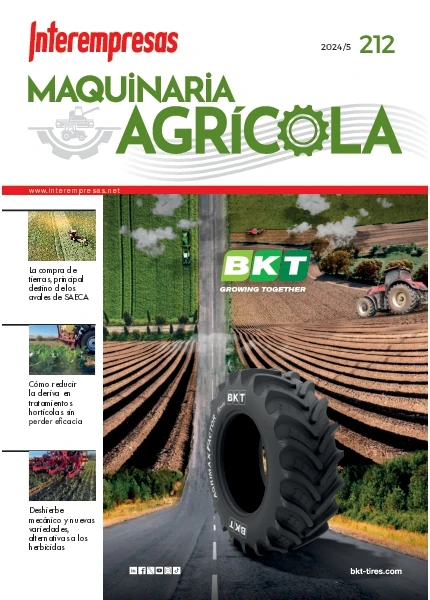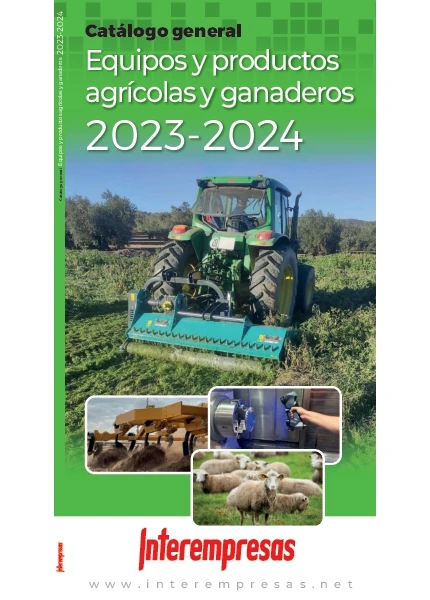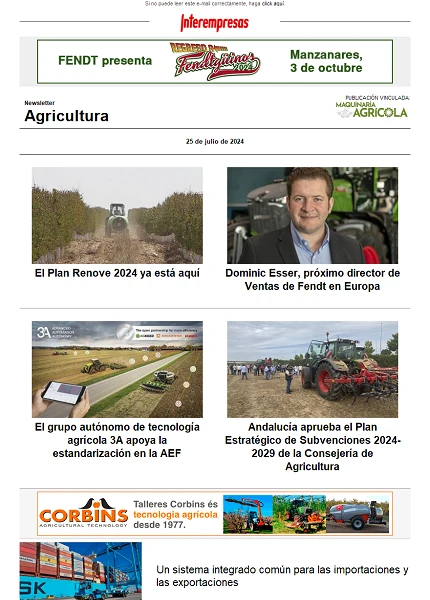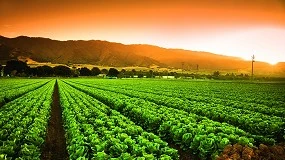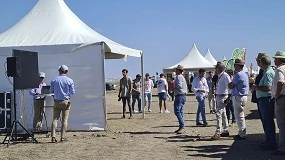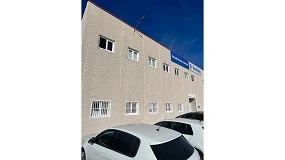New intensive farming challenges through sustainability
September 5, 2011
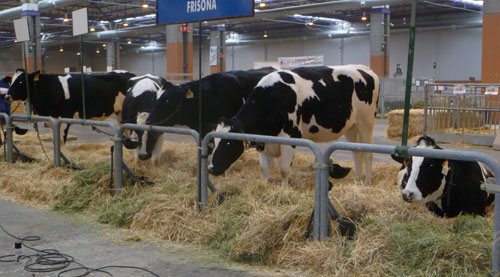
"On the subject that I'll try today, with the title 'The future challenges of intensive farming', could not say whether they are future challenges or already rabid present." "Even so, I think it is worth reviewing are the main challenges and opportunities facing the intensive production in our country. On 16 March, Esperanza Orellana, Deputy Director of livestock products of the MARM, thus began his speech, including in the technical conference 'towards a competitive and modern livestock within a framework of sustainability' organized by the Ministry itself. A few sessions that took place from 15 to 17 March, on the occasion of Fima Ganadera, at the Fairgrounds in Zaragoza.
Following the introduction, the Deputy Head of livestock products of the MARM reviewed the evolution and current situation of the major livestock sectors of intensive type in Spain. Since the 1950s, the pig has experienced great development which has placed it at the head of the ranking of intensive production, followed by poultry meat. "Today, the pig sector leads the breeding of our country." In fact, it represents 35.2 per cent of livestock final production and 11.4% of the final production, according to data from the year 2010. "The pig contributes almost EUR 4.5 billion to the final production", clarified Esperanza Orellana.
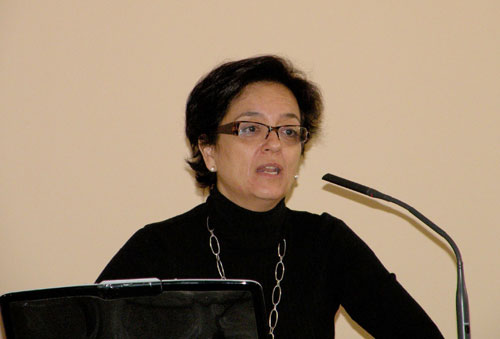
Concentration and large signs of future pig farms
Currently, Spain is the second EU country census of pigmeat, below Germany. At the international level, the European Union stands as the world's second producer of pork, behind China and far ahead of United States and Canada. "Furthermore, Spain is the fourth power world in this field, if it is isolated from the European Union", specifies the spokesperson of the MARM. After experiencing very notable growth, Census pig stabilized in 2006. In the past two years, pig production recorded a slight setback, due to economic problems and that they have affected the sector and profitability that have generated a slight fall, especially in census of breeding females. "Recent surveys, conducted in May last year, show a decline of almost 5% of the total of the swine herd during the 2009-2010" "In the case of the bristles saw a fall of 1% with a slight setback in the rest of the categories", he argued.
Another feature of the evolution of the pigmeat sector, in recent years, has been the abandonment and/or increasingly accused of small farms closure and replacement by others of larger dimensions, "the only ones that increase percentage", according to Orellana. In particular, in April of 2007 to November of the year 2010, the number of farms of reduced rate fell a 28.7%. This downward trend was also noted in small-scale or group first, with setbacks of 18.2%. "However, in the second and third groups, i.e. large farms, were noted increases of 7 and 12%, respectively." "This is a point to highlight in this process of concentration and change of dimensions of the sector towards more effective structures."
Finally, the Deputy Head of livestock products of the MARM referred to the important development of the export of pigs and their impact on rising prices. "This compensates for the increase in the costs of the raw materials intended for feeding to support farmers," he justified. And it is that pork meat exports, key sectoral development, have continued to increase in number of holdings, in tonnes, and also in value. On the basis of data from the year 2010, 36% of the country pork production is intended to foreign trade, basically to Member States and third countries. While in the European Union Spanish pork trade has balanced the last three years, exports to third countries are still upward, despite the slowdown in consumption in the world.
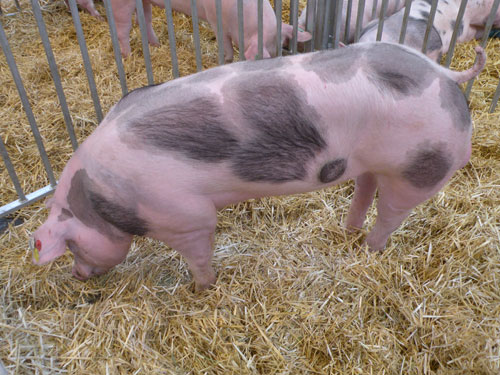
In recent years, the pig has undergone a process of concentration and resizing to larger farms. In the photo, copies displayed on FIMA Ganadera.
The dairy, a "deficit" sector which does not cover the demand of the country
In recent years, as of the Census of the dairy sector has been a decrease in the number of milking cows. Thus explained it Esperanza Orellana, Deputy Director of livestock products of the MARM, who also highlighted the existence of a much more pronounced concentration phenomenon in other livestock sectors. "During the past 15 years, we have noted that the number of holdings of this kind has gone from 141.000 to 23.800." This means that we have lost more than 100,000 farms in this period, but it has also increased, significantly, the average of the same dimension. In this way, the 38,000 pounds of share media got about farm to produce about 250,000 ". Even so, the average size of exploitation in Spain is situated below the Community average which would be 330,000 tons. "Therefore - stressed - still remains a significant margin for the restructuring process with a view to the disappearance of the system of quotas in the face to the year 2015".
Another of the themes developed in the paper was the fall of prices of milk, a phenomenon which began to forge three years ago when they were struggling to cover the costs of production. Throughout the last year, prices recovered form sensitive although much slower than in other countries around us. "With prices, also has recovered milk production." "The last campaign, which ends the month of March, has left some increases of 2.5 or 3% more milk than the previous, Orellana explained.
Another order of things, also addressed the situation practically stable sector of bait meat or beef, with a census of suckler cows in the past four years. You can not say that the number of calves for bait, with setbacks in the order of 13% in animals younger than 12 months or 12 per cent in females of less than 12 months. "This has largely, to the loss of dairy cattle at the end and at Cape was also a source of important supply for the bait industry".
Similar to dairy farms, the number of suckler cows farms also has receded, around 7% in the last five years. On the contrary, bait or out-of-State farms have gone from 36,000 to 25,000. This also demonstrates the process of restructuring that has been in this sector very conditional to the disappearance of coupled aid. "At the time that the limit of 90 animals per farm disappeared, had no interest have farms under these requirements." Very inefficient and nothing competitive holdings. "Basically, gone a great number of small farms, replaced by other larger", explained.
As a CODA, and for four years, the production of beef, both Spain and the rest of the States Member, has gone to the low result of the loss of productive fabric and the fall in demand. And it is that the consumption of beef, at a price higher than other meats, has been affected by the economic situation.
The cost of beef has brought with it a minor Spanish competitiveness in EU markets. Foreign trade is no longer purely exporting that imports exceeded exports, for four years. This has helped lower own production and the most competitive prices of beef coming from foreign countries, even outside the EU. In any case, Spain exports still 17% of the beef produced.
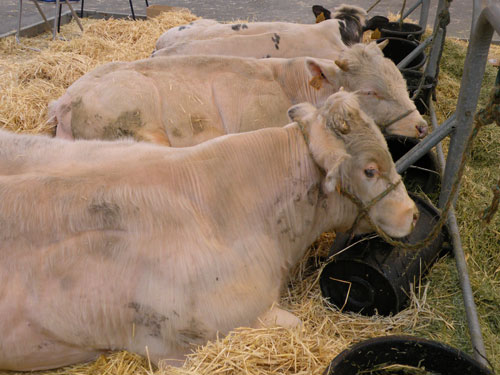
Drops the number of fattening chicken farms and increase measures to other alternative aviculturas
In tune with what is already happening in other areas of intensive animal husbandry, the number of farms for the production of poultry, especially of chicken meat, has also experienced a setback in the last 4-5 years. This decrease has been primarily in the farms of broiler chickens with almost 6% less facilities. "On the other hand, a growing number of farms to other alternative aviculturas (graffiti, ducks, turkeys, geese, quails) in our country." It's an emerging market, with the exception of ostrich farms. "The latter had its peak at the time of mad cow disease, but since then they have not done more to back," he added Orellana.
Basically, the foreign trade of poultry meat represents a trade in which Spain has always imported than exported, to be a slightly deficient country in this production. In general, imported meat bird in countries of the European Union, although the increase in exports of the last 3-4 years has shortened the initial imbalance. "Perhaps this is due to the low price of Spanish poultry meat in recent years, that have become more competitive in the EU." "In addition, and for two years, we are gaining market outside the European Union, for example in African countries, Middle East.... and here the issue of price also has a lot to see", added. In terms of prices, the poultry sector is characterized by peaks upwards and downwards, on the basis of production costs, although it has a very elastic demand not conditional to this factor.
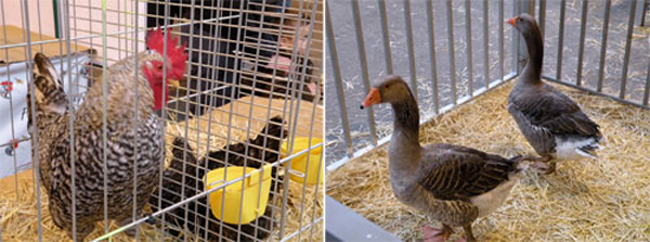
For its part, production in the poultry sector's implementation also has receded, slightly, since 2004 until now, according to the consumption of eggs in the domestic channel, only the quantified by the MARM. "While the retail price has risen, it not has influenced the decrease in consumption." "In general, is a cheap product compared to other sources of protein," said Esperanza Orellana.
Another dominant note in this sector has been productive farming systems evolution. As of the Census of hens in battery has passed 45 to 41.5 million in the past two years, de gallinas criadas en alternative systems has grown, especially the jacket hen.
This downward trend has also been observed on the farms of laying hens, with declines of 26.3 per cent in the past four years. "This means that the average farm size has increased significantly, that the census has not declined proportionately".
In terms of foreign trade, the sector is merely exporting mainly to countries of the European Union, where most exchanged product is the egg shell. More treated or processed products are exported to third countries.
Regarding the sector cunícola, the last of the intensive analysed, this has decrecido enormously in all his parameters, productive, etc., in the last years. From the year 2008, a third part of the exploitations have closed, because of a big loss of inner consumption. “The reason of this shrinking is due to that it consumes less meat of rabbit and is difficult to think in a remarkable recovery. And it is that the habits of consumption of the new generations are very far of a meat that tastes associated to a type of traditional kitchen”.
In general lines, the sector cunícola is mainly exporting. Even so, the sales to foreign countries have gone down also in the last four or five years, fruit of the situation of declive of all sector in his group. “The prices are a part of the problem –puntualiza the deputy director of Products Graziers of the MARM– since they do not reward the costs from does long, no only now that the raw materials are by the clouds. This has given foot to the closing of farms of small dimensions”.
Intensive farming is dependent on environmental sustainability and the livelihood of the productive fabric
While the Deputy Director of livestock products of the MARM described the past three years of "unhappy for intensive livestock production", it also ventured the future challenges that they will face. Challenges that provide the backbone around sustainability understood as the need to respond to all the demands that have this type of livestock. "Fundamentally, environmental needs, of protection and animal health, environmentally friendly rural development, etc." They are subjected productions, to a greater extent, to health risks. "And at the same time, there is a need to ensure, from the economic point of view, the sustainability of the own productive fabric through a minimum of competitiveness to ensure at least one supply with EU countries and also to our own internal market product," specified. This is because of not relying on overseas markets to keep the industry, as well as the product on the shelf. A phenomenon that occurs in any of these capital-intensive sectors, such as beef or pork.
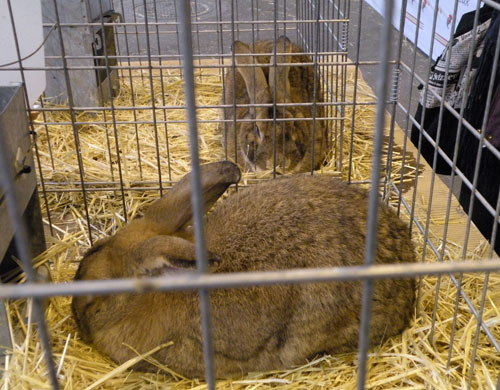
Firstly, the environmental challenge includes four problems associated with factory farming: greenhouse gas emissions, degradation of soils in some cases, all linked to the quality of the water and air, habitats, and finally, diversity. The latter is result of a production model based increasingly in a series of select livestock breeds on premise of winning effectiveness. "In that regard, it is regardless of native races, which implies a certain risk of loss of biodiversity", argued the spokesman of the MARM, who stressed that the four aforementioned points are those that identifies the communication from the Commission on the reform of the CAP as the major environmental challenges of livestock.
On the basis of that communication between the principal impacts of climate change on European agriculture highlights the decline of water, the increased risk of drought and heat waves, also increasing erosion of the soil, the cut of the seasons of cultivation, crop yields and optimal acreage decreased. "He must banish misconceptions." Although many communications from the FAO identified to livestock and agriculture as one of the main sources of greenhouse gas emissions, we must bear in mind that emissions from both have fallen 20% in recent years, highlighted Esperanza Orellana, who pointed out that this effort must continue to ensure environmental sustainability in the field."
Second, and in matter of animal welfare, did reference to the model of European identity “very demanding”, in words of the deputy director of Products Graziers of the MARM. “Even so we can not accept a model that do not satisfy the citizen demands, every time greater, in animal protection. Besides, our country has sectors like the pork, the one of the egg and the beef that live, largely, very dumped in the outside”. In third place, and regarding the premise to guarantee the sustainability of the knitted product, this hampers to measure that increase the episodes of rises and descents of prices of the raw materials, increases that is used to to absorb the primary sector. Some increases that the producer can not move to the rest of links of the chain. “From it does 3-4 years, the European Union has begun to replantearse the how ensure said sustainability, sight the volatility of the prices. To second the balance of the chain, in spite of the pressesure of the big distribution and the fault of efficiency in the productive field, among others reasons, is necessary to move the costs to all the chain and this goes through legislative measures”, explained. To such effect, the speaker did reference to the situation that experiences the dairy sector, first sector in which debate on a legislative package that allow a collective negotiation on prices between graziers and industry. “This is limited in these moments and can not do because of the legislation of competition. However, in the sector of the milk will be possible along this year”.
During the presentation, it was evident imbalance between the added value that perceive livestock and other actors in the chain, as commercial distribution. After showing a graphic of the European Union until the year 2006, the spokesman of the MARM showed the distribution of added value of production during the years 1996, 2000 and 2006. If in the beginning, the producer received 31% of the value of a product, the food industry was left with 31%, intermediaries with 11% and finally commercial distribution with 27%. A decade later, the farmer or rancher earned 24%, food industry 33%, intermediaries, 13% and 30% commercial distribution. "Is appraised as the world has grown at the expense of the primary link," he said.
From the Ministry, also stressed the challenge more important and differentiating feature of livestock production, common to other Mediterranean countries; a much more dramatic deficit as well as a heavy dependence on external markets in supply of raw materials and grain for animal feed. A dynamic that is not in the countries of Northern Europe. Dependence made worse by the higher prices of these raw materials, as has already happened in the period 2007-2008. "At the end of last year, already was a significant cost in the feed of chickens and intended to respect others for fattening, piglets which impacted very negatively on the margins of farmers".
Finally, the Deputy Head of livestock products of the MARM detailed major policies in which we work to respond to the challenges. As the reform of the common agricultural policy, in operation from the year 2013, and that has already been made public first communication of the Commission laying down three blocks of tools in the line of those who already had until then. On the one hand, direct payments will have a much more environmental orientation to respond to this sustainability. On the other hand, market measures with ideas that deal with around tools for regulating these markets that may not be dismantle as well as the improvement of the food chain in the sense of the redistribution of value added. And finally, rural development will be organized around three main pillars: environment, climate change and modernisation of farms.
According to Orellana would continue discussions on competitiveness and the creation of a regulatory framework that guarantees. "In addition, it calls for a balanced framework of international trade agreements, i.e. commercial reciprocity with third countries." Also, a return adequate to farmers by that effort in meeting these requirements for sustainability through the price. So that the consumer is willing to pay for that different model and that is worth more. "And support direct to producers through the aid of the CAP, whether first or second pillar, they compensate for the extra effort of European farmers."
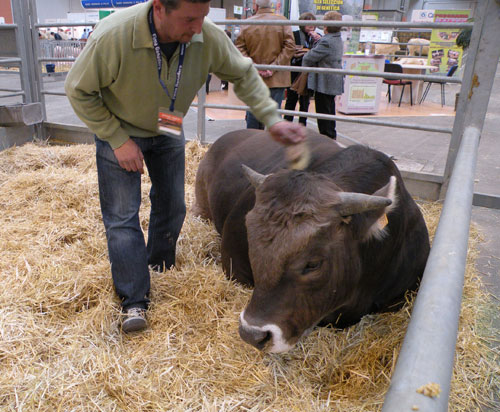
The answer to the challenges of the intensive farming of the country also has come from the sector itself. From the Ministry, and in the course of the presentation, they noted that "there are a number of strengths that should be exploited". Some points are described below, to keep in mind.
-Foreign trade through the opening of commercial channels very powerful, new markets and greater competitiveness. The model of competitiveness must not be based only on price, but also in the quality and the image of country. It is necessary to disseminate the idea of respectful sector with the demands of European citizens, with regard to food safety or welfare, labelling and product information.
-Bet on product diversification. You can not fall into the error create monoproducto such as the milk or the poultry sectors. "Why it costs so much raise margins of dairy producers because the industry is focused on warm milk and put it in a tetra pack." The product has a very short added value and thus it is very difficult for the sector to benefit from international markets based on butter and cocoa powder milk, very interesting at the moment. "Or the products of higher value-added like cheeses, and that France they rounded the accounts of exploitation of dairies in the country," points out the Deputy Head of livestock products of the MARM.
Another example of industry monoproducto is the poultry, which has set aside alternative models of parenting with a margin of remarkable development as ground poultry and has focused on the broiler chicken. Or for placing of eggs, with a production of 96% in cages system. "They are very competitive but the domestic market will probably require new products, why should work on labelling and information".
-Investing in innovation and modernization because intensive farming is facing a or scenario of high production costs.
-Launch of producer organisations or any other form of joint marketing.
- And finally, the contact between various links in the chain, through interprofessional to thus strengthen positions before the distribution channel.


